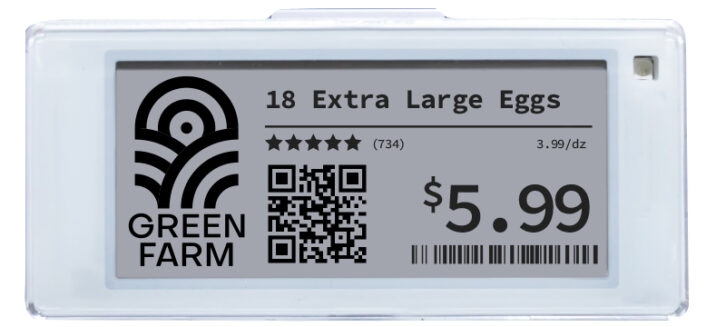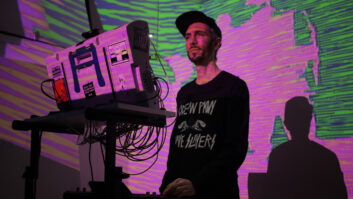
Your store is stocked with the latest bleeding-edge technologies for sale. But how do your customers know how much each of those high-tech wonders costs? Likely via decidedly low-tech paper or plastic price tags.
It may be time to make your shelf labels as high-tech as the products for sale on your shelves. Earlier this year, the Bluetooth Special Interest Group (SIG) released a new scalable, low-power, and secure wireless standard and specifications for e-paper electronic shelf labels (ESL).
ESLs have been around for nearly two decades, but lack of standardization, a combination of high cost and low ROI rationalization, and ESL vendor technology silos have stalled their widespread adoption. This new Bluetooth ESL standard removes many of these roadblocks and will allow ESL vendors to standardize their products. Retailers will be able to mix and match ESL products from different vendors and shop on performance rather than technology. Bluetooth-enabled ESLs also can more flexibly fit with other smart store technologies including wireless sensors, lighting controls, and beacon infrastructure.
Standardization, according to a new report from the Bluetooth SIG detailing the new standard, “enable ESLs to become just one part of a wider smart retail wireless network that is able to aggregate and analyze data from several different use cases and devices to generate more intelligent insights and services.”
For consumer technology retailers, the new Bluetooth ESL standard offers a vast array of pricing, promotional, and operational advantages over old-fashioned printed labels that include automatic updates for more accurate and dynamic sales, competitive-matching, and omnichannel pricing alignment; better real-time inventory tracking and management; additional customer access to product, stock information, and product reviews; and, the ability to combine with NFC and QR codes to link to additional information online.

“The introduction of the Bluetooth electronic shelf label (ESL) standard will help minimize barriers to ESL adoption to unlock the next phase in retail digital transformation and deliver better outcomes for both stores and shoppers,” says Chuck Sabin, senior director of market development for the Bluetooth SIG.
When combined with Bluetooth proximity services and mobile devices, Bluetooth ESLs also can help provide tailored proximity-based promotional offers or upsell recommendations and help monitor traffic around certain products or in-store locations.
“With Bluetooth ESL, retailers can respond swiftly to pricing adjustments, market trends, and promotional strategies to drive meaningful interactions with shoppers while also gaining valuable customer behavior data to uncover growth opportunities and increase profitability,” Sabin adds.
Considering the depth and breadth of Bluetooth, the new standard promises future scalability. As the report notes, the Bluetooth ESL standard “is likely to enable a much wider number of Bluetooth chipset and ESL solution providers to address the market, while Bluetooth chipset solutions and reference designs specifically addressing the requirements of the ESL market are likely to emerge. This will enable greater product choice, increased competition, a larger supply of products and wireless chipsets, global availability, a reduced burden of entry, faster time to market, and collaboration from a wide number of players across the value chain.”
See also: STORIS Launches New Integrated Credit Card Processing Solution












